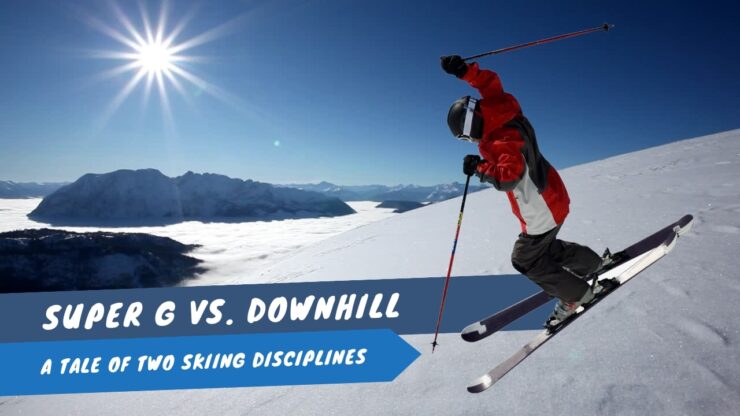The sport of alpine skiing can involve a wide variety of disciplines and techniques. Two of the most popular events are Super G (Super Giant Slalom) and Downhill races. While both events involve skiing quickly down an incline, Super G and Downhill skiing have noticeable differences. To help clarify these distinctions, we’ll explore what sets Super G and Downhill apart below.
Understanding the differences between Super G and Downhill may help ski racers determine which event suits them best—or allow non-competitors to better appreciate the unique aspects of each discipline when watching professional racers in action.
Types of Skiing
Skiing can be broken down into different categories based on the type of run and the ski gear used. Super G and downhill skiing are two of the most popular types of skiing. Their runs are both fast, steep, and require good technique, but there are some notable differences between the two.
Let’s explore the technical differences between these two skiing styles in more detail.
Super G
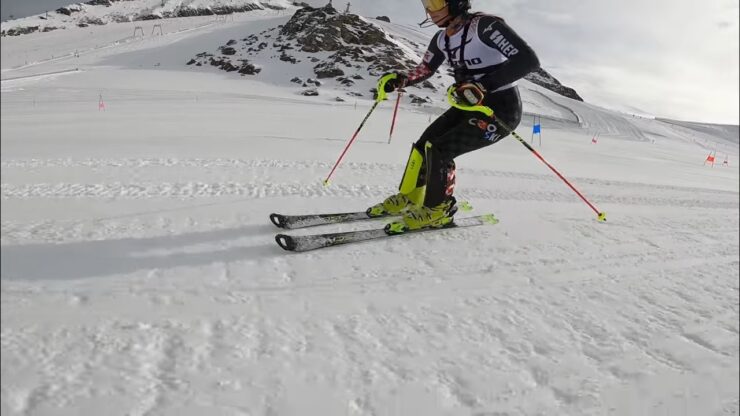
Super G is a type of alpine skiing event that takes place on downhill courses, usually between the lengths of 1.5 km to 2.2 km (0.9 to 1.4 miles). It is also sometimes referred to as Super Giant Slalom, and it is a speed-oriented event where racers must navigate gates placed along the course in alternating order (one right and one left). Racers generally reach speeds between 90 mph to 110 mph, making it the fastest of all alpine skiing events.
In contrast with the Downhill event, Super G requires athletes to navigate more varied terrain and more gates than Downhill in order to provide a greater technical challenge for World Cup competitors. At the same time, Super G events tend to be shorter than Downhill events (with completely open courses for racers), allowing for faster runs and less fatigue for athletes during competition days.
Racing blocks of two or more skiers are particularly common during competitions as this allows for improved visibility for officials who are responsible for scrutinizing each athlete’s line selection down the course.
The equipment used by skiers has changed over the years from longer ski lengths with stiffer flexes preferred in earlier years, to lighter and softer ski designs used today that provide improved grip on icy race surfaces while still offering increased stability at higher speeds – these designs offer World Cup skiers an advantage they didn’t have in previous decades when faced with increasingly demanding sections during Super G races down a variety of terrain features including steep slopes, jumps, banks & turns along their routes toward the finish line at speeds approaching those seen during typical world-class downhill races.
Downhill
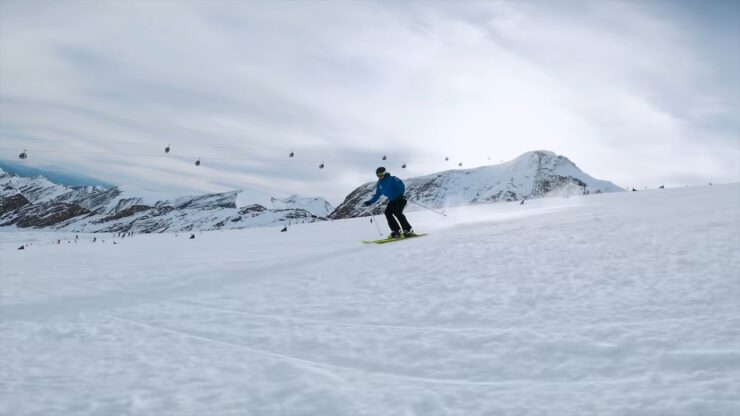
This is an adrenaline-fueled activity in which skiers are propelled down a mountain slope at high speed and make their way through turns using a combination of gravity and skill. This style of skiing is considered a “free skiing” discipline because each skier can make their own path down the mountain with sharp or gentle turns and jumps. They can ski on groomed slopes, but the highly skilled prefer the more challenging terrain of icy moguls and natural terrors.
It can be dangerous, especially for those inexperienced in navigating difficult terrain. Skiers should always exercise caution when tackling downhill runs at any level of experience.
Downhill ski gear is designed to be lightweight, providing optimal performance on an unpredictable mountain surface. Racers typically use slalom-style skis designed for carving with sides that are shorter than their centerline length to create quick turns. Other downhillers may prefer wider freeride skis with sides more evenly matched to their centerline length for greater stability on more advanced runs.
Longer cross-country skis offer increased balance for newbies and those tackling challenging off-piste areas like couloirs or powder bowls. Boots are often fitted with polymer plastic materials that allow greater ankle movement while providing crucial support on a bumpy trail like a mogul field or double diamond run.
Similarities and Differences
Super G and Downhill skiing is both thrilling winter sports, and are often confused with one another. But the truth is, each of these sports comes with its own distinct set of rules and strategies that separate it from the other.
So, what are the major similarities and differences between Super G and Downhill skiing? In this article, we’ll discuss the different elements of each one of these sports and highlight some of the key similarities.
Speed
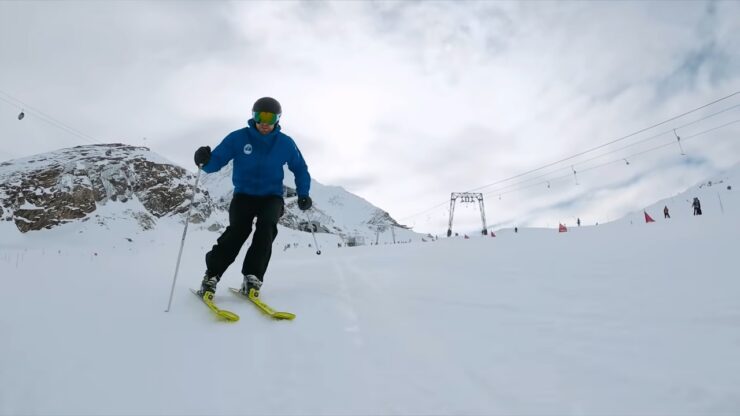
When it comes to speed, the two events are very different. Super-G is one of the faster Alpine skiing events, with speeds reaching up to 85 mph (140 kph). Downhill skiing is more like a “drag race” on skis and often involves speeds in excess of 100 mph (160 kph).
Super-G is a timed event that also takes terrain into account. Skiers must navigate around gates as quickly as possible while staying on the intended path. Downhill events are a straight race from top to bottom, which allows racers to take whatever line they believe will give them the best time and most out of their equipment.
Points are subtracted for milestones missed or gates hit; grabbing any kind of edge on their competitors in some cases can make all the difference. As such, downhill racers must be able to think ahead and plan several moves ahead during their run in order for them to be successful.
Course
Super G and downhill skiing are completely different disciplines as they involve two very distinct courses, each with its own special attributes and environments. The courses for each discipline are designed for the individual skiing style used, with Super G being less technical than downhill.
Super G’s course is shorter than a downhill course and often has wider turns. This allows skiers to build up more speed as they reach the finish line by incorporating fewer turns into their runs. Combining flat sections, long curves and waves of terrain gives skiers the opportunity to ski with more control while building up momentum.
On the other hand, a downhill course features higher speeds which require a much greater degree of technical skill. As well as flat sections, the ski route also includes steeps, rolls and steeper curves which are definitely challenging even for highly skilled skiers. By featuring smaller radius turns that twist in on themselves as well as ever-changing terrain throughout the route, downhill gives skiers an experience like no other event in skiing that includes some dynamic movement through space while making their way down the course in mere seconds.
Equipment
Equipment is where skiers and snowboarders will differ the most. Alpine skis are two parabolic-shaped slats of fiberglass, metal, or composite material that are fastened to your feet with bindings. Skiers need and use poles while snowboarders do not.
The length, shape, and construction material of both skis and snowboards vary depending on the rider profile and terrain they will cover, but downhill alpine skiing typically uses longer, stiffer skis than those used for freestyle skiing. Ski bindings play an important role in linking a skier to the ski, transferring power from your boots’ edges to the ski edges for more control over turns as well as distributing forces in different directions of turn.
Snowboards have a similar flat base with edges along the board’s length on each side which attach to the rider’s boots via binding disc systems or through clips. Snowboards also feature directional shapes that affect turning ability in various conditions. Snowboard boots are much stiffer than ski boots allowing more responsive steering within turns while providing better lateral control than ski boots due to their one-piece unibody construction compared to separate boots & plates used by skiers.
Athletes and Competitions in Super G
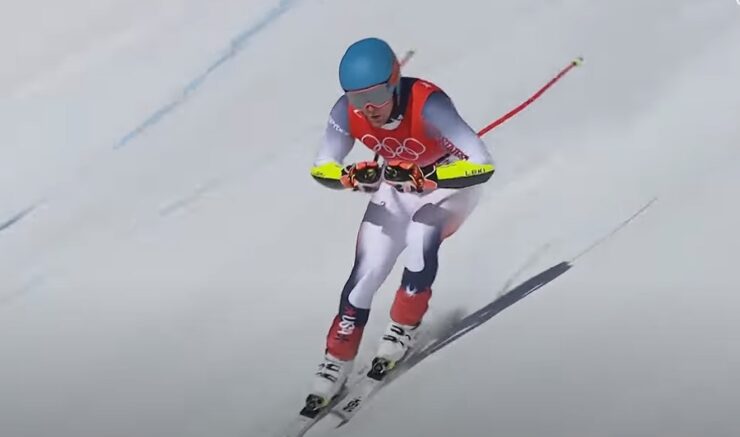
Hermann Maier of Austria, also known as ‘The Herminator’, is widely considered the greatest male super-G racer of all time. He has 24 World Cup victories and five World Cup titles to his name, winning four consecutive season titles from 1998 to 2001 and another in 2004. Maier’s success in super-G was largely attributed to his thorough course inspection and aggressive tactics. He often chose the most direct and dangerous line down the hill, making him a formidable opponent.
Despite a serious motorcycle accident in 2001 that nearly resulted in the amputation of his lower right leg, Maier made an incredible comeback. He returned to the World Cup circuit in January 2003 and won eight more World Cup super-G events, as well as his fifth season title in 2004.
Aksel Lund Svindal of Norway is the second-most successful male super-G racer, with 17 World Cup victories in the discipline. Kjetil Jansrud is third with 13 wins. Svindal won Olympic gold in 2010 and his fifth season title in 2014, while Pirmin Zurbriggen won four consecutive season titles (1987–90) and the first world championship in 1987.
Kjetil André Aamodt of Norway is another notable male super-G racer. He won three Olympic gold medals in super-G races, in 1992, 2002, and 2006, as well as two world championship medals (silver and bronze) in the discipline. Marc Girardelli of Luxembourg, a five-time overall World Cup champion, won nine World Cup super-G events. Although he won season titles in every discipline except super-G, he was a runner-up three times. Girardelli was the silver medalist in the super-G at the 1987 World Championships and the 1992 Olympics.
On the women’s side, Lindsey Vonn of the U.S. is the most successful super-G racer of all time, with 28 World Cup victories in the discipline and five season titles. Katja Seizinger of Germany won five season titles in the 1990s and has 16 World Cup wins in the discipline. Although neither won Olympic gold in the super-G, both won a world title – Vonn in 2009 and Seizinger in 1993. Renate Götschl of Austria won 17 World Cup events in super-G, three season titles (four as runner-up), and two medals (silver and bronze) in the world championships.
Spectator Experience
Watching a Super G or Downhill skiing competition can be a thrilling and unforgettable experience. Spectators can get up close and personal with the athletes as they hurtle down the course at breakneck speeds, displaying incredible skill and athleticism. To fully enjoy the spectator experience, it’s important to choose the best viewing spots and understand the course layout.
One of the best ways to experience a Super G or Downhill skiing competition is to watch it from the side of the course. This allows spectators to see the skiers as they come straight toward them and then quickly zoom past. Spectators can feel the wind as the skiers’ race by, and they can see the incredible speed and precision of the athletes up close. However, it’s important to remember to stand in a safe spot and be aware of any instructions or warnings from event staff.
Another great option for watching a Super G or Downhill skiing competition is to watch from above. Many competitions have a viewing platform or grandstand that provides a panoramic view of the course. This is a great way to see the entire course and get a sense of the skiers’ speed and skill as they navigate each section. Some competitions also have screens or commentators that provide additional information and insight
Understanding the course layout is also important for enjoying the spectator experience. Courses are often designed to challenge the skiers with steep drops, tight turns, and jumps. Knowing where these obstacles are can help spectators anticipate the skiers’ movements and appreciate the difficulty of the course. It’s also helpful to know where the finish line is so that spectators can cheer on their favorite skiers as they cross the line.
Finally, technology has enhanced the spectator experience at Super G and Downhill skiing competitions. Many competitions now have giant screens that show live footage and replays, providing a closer look at the skiers’ technique and skill. Some events also offer virtual reality experiences, allowing spectators to feel like they are skiing down the course themselves.
Safety and Risk
While these sports are thrilling to watch, they also carry inherent risks for both the athletes and spectators.
To minimize the risk of injury or accident, safety measures are in place at Super G and Downhill skiing competitions. These measures include course inspection and preparation, athlete training and equipment regulations, and emergency response protocols.
Course inspection and preparation are critical to ensuring the safety of the athletes. Before a competition, course workers will inspect the course to identify any potential hazards, such as rocks or ice patches. They will then use grooming equipment to prepare the course, including smoothing out any bumps or rough patches. In addition, course workers will mark the course with flags and other visual cues to help athletes stay on track and avoid potential hazards.
Athletes also play a role in ensuring their own safety. They must undergo rigorous training to develop the strength, skill, and endurance necessary to navigate Super G and Downhill courses. They must also adhere to strict equipment regulations, including requirements for helmets and other protective gear. Athletes who do not meet these regulations may be disqualified from the competition.
Finally, emergency response protocols are in place to respond to any accidents or injuries that may occur during a Super G or Downhill skiing competition. Medical personnel are on hand to provide immediate assistance to injured athletes, and helicopters or other transportation may be used to quickly transport them to medical facilities if necessary. In addition, safety protocols may be adjusted based on weather conditions or other factors that may impact the safety of the athletes.
Despite these safety measures, Super G and Downhill skiing carry inherent risks for both athletes and spectators. It’s important to remember the dangers of these sports and to always prioritize safety over thrills. Spectators should stay in designated viewing areas and follow all event staff instructions, and athletes should always follow proper training and equipment regulations. By working together to prioritize safety, we can continue to enjoy the excitement and thrill of Super G and Downhill skiing competitions.
FAQs
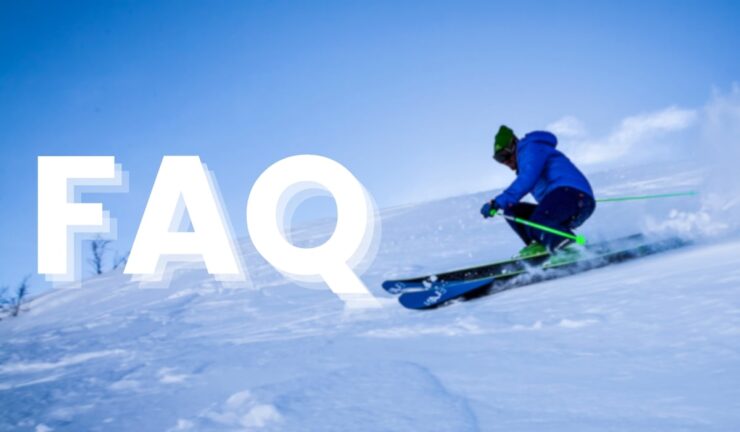
What type of turns are featured in Super G vs. Downhill?
Super G features a combination of long and short turns, while Downhill features long, fast turns.
What type of jumps are featured in Super G vs. Downhill?
Super G features small jumps, while Downhill features big jumps.
What is the scoring system for Super G and Downhill?
In Super G and Downhill, the winner is determined by the fastest time down the course.
What is the difference in the time limit between Super G and Downhill?
There is no time limit for Super G, while Downhill has a maximum time limit of two minutes.
What type of equipment is used for Super G and Downhill?
Skiers use longer and wider skis for Downhill, while Super G skis are slightly shorter and more flexible.
What type of body position is required for Super G vs. Downhill?
Super G requires a more upright body position, while Downhill requires a more crouched position.
How is the Super G and Downhill technique different?
Super G requires skiers to make quick and aggressive turns, while Downhill requires a more fluid and relaxed technique.
What is the difference in the number of runs between Super G and Downhill?
Super G usually consists of one run, while Downhill consists of two runs.
What is the difference in the average age of competitors in Super G vs. Downhill?
Competitors in Super G tend to be younger than those in Downhill, with an average age of 26 compared to 29 for Downhill.
Which discipline is more dangerous, Super G or Downhill?
Both disciplines carry inherent risks, but Downhill is generally considered more dangerous due to the high speeds and big jumps involved. However, safety measures are in place to minimize the risk of injury in both disciplines.
Conclusion
In summary, there are several distinct differences between Super G and Downhill skiing. The courses themselves differ in design and potential speeds. While both events employ the same basic technique and equipment, the way competitors approach each event is markedly different. Finally, Super G racers have to worry about more intricate changes in terrain while downhill allows them to simply focus on speed. Ultimately, both of these challenging events call for great skill and knowledge of the sport of skiing.

